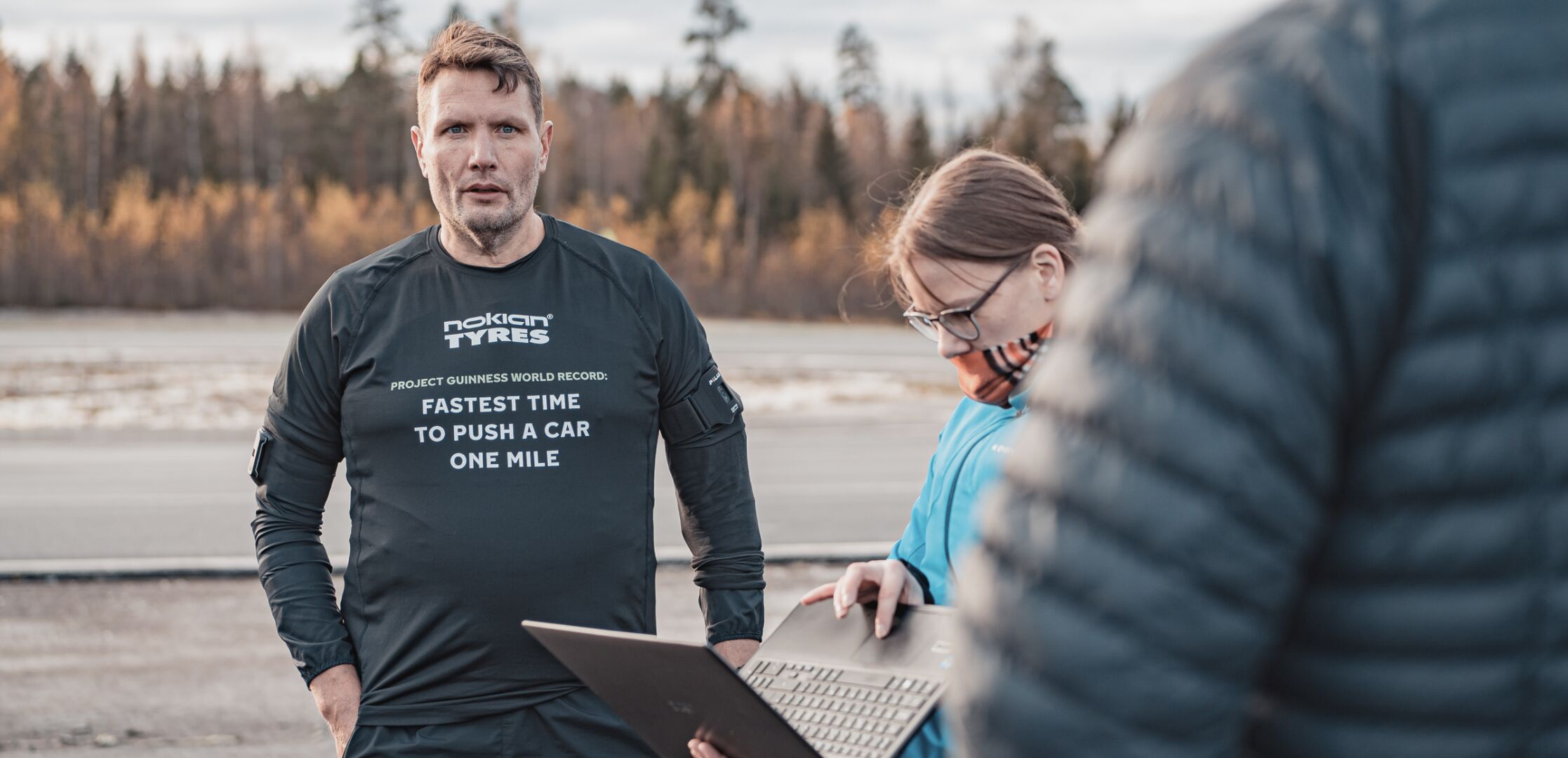
Maximum heart rate was only 164 during the record push
The record-setting performance utilized and gathered many types of data, as the project involved Myontec Oy, which specializes in smart clothing and muscle monitoring, and the sports electronics company Polar Electro Oy.
– It was easy for us to get involved, as we saw that the record attempt is on solid ground thanks to good, versatile training. Over the years, Polar’s products have been used in outer space and in Formula 1 race cars, so measuring a record attempt sounded like a great challenge, says Smart Coaching Manager Ville Uronen from Polar.
It was easy for us to get involved, as we saw that the record attempt is on solid ground thanks to good, versatile training.
Ville Uronen
Smart Coaching Manager from Polar
Jussi followed his plan exactly and did not start off too hard. The data produced by the multi-sensor unit measuring Jussi’s performance was sent in real-time to the backend service using the latest in IoT radio technology.
Jussi’s maximum heart rate during the performance was very low, only 164 beats per minute, even though the speed temporarily increased over the first 100 meters and reached 10.4 km/h. Muscle activity was approximately 41% of the measured maximum value. Around the middle point of the performance, Jussi was using 35% of his muscle power.

- The activity level was higher on the left side, on the front and back thigh muscles and gluteal muscles, which indicates muscle balance, but was also likely due to the fact that the track was circular in shape, says expert Heidi Jarske from Myontec.
